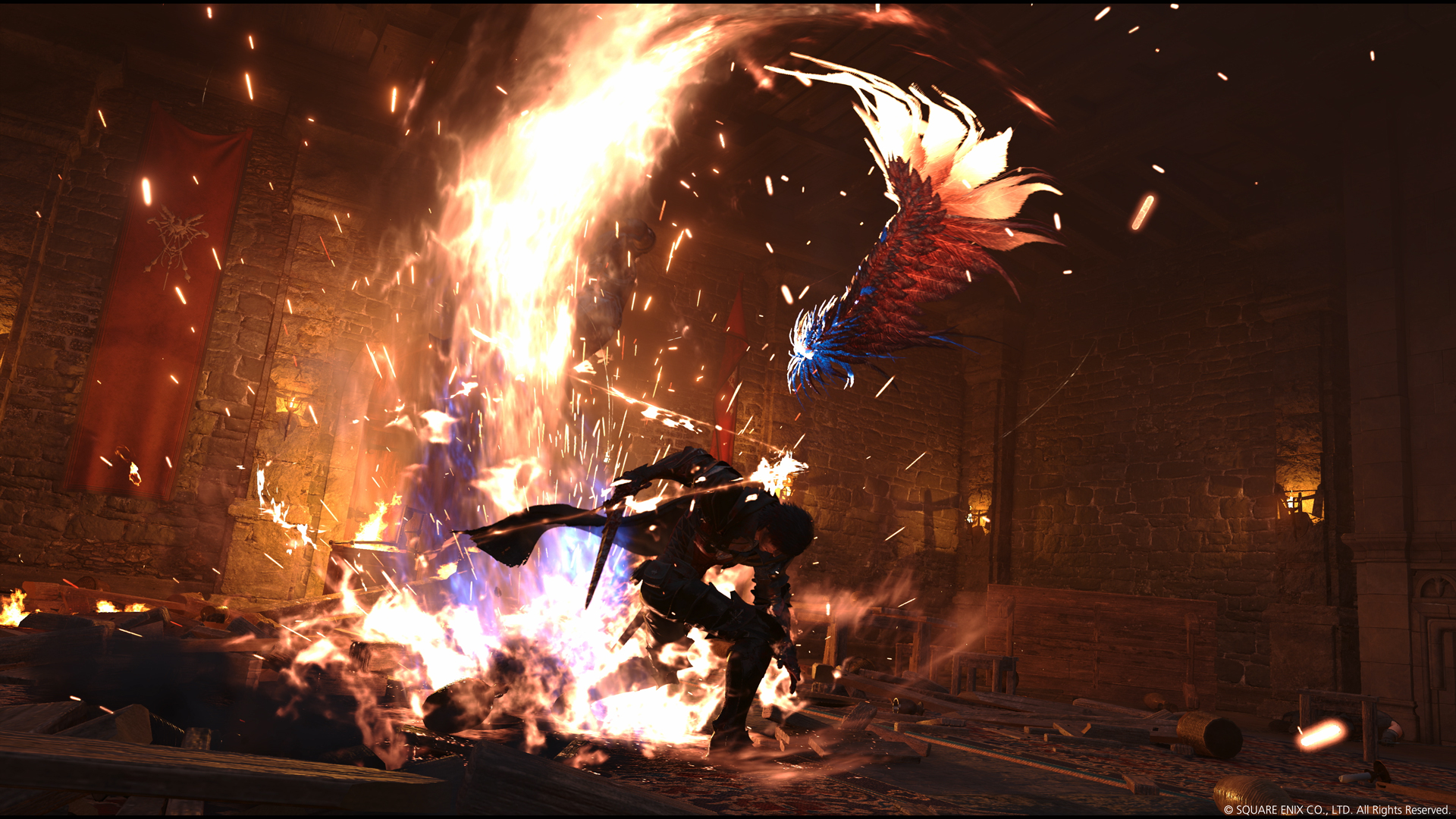
I think I was one of the first people outside of Capcom to play Devil May Cry 5. That Gamescom 2018 demo had me raving to anyone who'd listen about the sublime sequel, a surprisingly welcoming action game with a protagonist who, shockingly, wasn't annoying – and a killer headline-grabbing feature in interchangeable prosthetic arms with unique abilities.
By now you've been endlessly told of Devil May Cry 5 and Final Fantasy 16's shared DNA by combat director Ryota Suzuki. Hired from Capcom in 2020 after the former game, Suzuki is said to have completely overhauled the Square Enix game's combat; helping to seamlessly meld abilities and movesets to create one buttery smooth combat system that, three years later, plays like a dream.
Shared history


Final Fantasy 16 review: "Stands alongside the series' greats"
All the attention on Suzuki has overlooked one key feature though, which I mentioned previously: Devil May Cry 5's prosthetic arms. These 'Devil Breakers' all boasted varying abilities – some would let protagonist Nero zip and bounce through the air to a target, while others would drag a target screeching towards our hero, and one even just fired a damn missile towards an enemy.
The Devil Breakers were electrifying, an absorbing feature that totally transformed Devil May Cry from just another action game to one of the best games in the entire renowned series. Because every Devil Breaker had a different ability, each one would completely change your play style and force you down new avenues. If you're left with just a Gerbera for example, your Nero would change into more of a hit-and-run attacker than someone who stands in the frenzy of a bloodbath and dishes out punishments. Something like Rawhide on the other hand would extend your grab ability, so you could fearlessly pull in enemies for a devastating chain attack instead of having to stroll up to foes for a beating.
Four years after Devil May Cry 5 originally launched, the Devil Breaker foundations have been expanded in Final Fantasy 16. The new game retitles Summons to 'Eikons', and gives our hero Clive abilities relating to each Eikon – Ifrit grants a devastating upswing ability for laying foes out cold, for example, while Garuda's Air-based ability can send folk sky-high for Clive to pull off a staggering aerial combo attack. Moreover, the Eikonic abilities bear a striking resemblance to the Devil Breakers in their gameplay philosophy. Each distinct ability is meant to open up and cater to a brand new way of playing Final Fantasy 16. If you want to pull off longer attacks, Garuda's abilities have you sorted, whereas Ifrit's unique actions in combat are just pure overpowering damage, meant to decimate anyone in your way.

"Both Eikons and Devil Breakers aren't just fancy tools – they teach us about the person who wields them."
What's key here is that Final Fantasy 16 allows you to switch between Eikons and their abilities on the fly, just like Devil May Cry 5 did with Devil Breakers. Nero can switch out a Rawhide arm for a Gerbera if he needs to cover ground to an enemy, and Clive can do the exact same thing with Garuda, using her zipwire-like ability to pull in foes from afar. It's this switching that really cements the Devil Breakers as a clear inspiration for the Eikons and their abilities. It's easy to take a look at Final Fantasy 16's flashy new combat, fast and fluid as it is, and point to Devil May Cry 5 as the obvious reference point, but it's the Eikons and Devil Breakers, and their shared DNA, that warrant a deeper look into the two combat systems.
Both Final Fantasy 16 and Devil May Cry 5's shared concepts are also cleverly tied into the world around them. Nero's gone and got his arm torn off in the latter, and the cool new toy on his arm informs his cocky and boastful personality. Eikons, on the other hand, are basically gods walking around in the flesh, and Clive being the only living person who can command multiple Eikons around at once similarly denotes his unique position in Valisthea. Both Eikons and Devil Breakers aren't just fancy tools – they teach us about the person who wields them.
Ryota Suzuki's been the center of attention for over three years now. When he was first hired on Final Fantasy 16 the game hadn't even been announced, and Square Enix would only state that he was working on a new action-RPG. It's easy to just look at Suzuki's career at Capcom and chalk up Final Fantasy 16's new combat to a broad Devil May Cry influence, but look closer at the Eikons, and you can see the blueprints of the Devil Breakers, and an expansion of that excellent concept.
You can read up on our best Final Fantasy 16 tips for the smoothest journey possible through the land of Valisthea.







